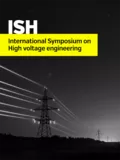Summary
Several new high voltage direct current (HVDC) transmission schemes are being planned or are being constructed, world-wide. One of the key design and performance considerations for these transmission lines is the choice of insulator, based on the prevalent environmental conditions. In Southern Africa, there are proposals for HVDC schemes to be constructed traversing through various environmental conditions, and special attention needs to be paid to the leakage current performance of the glass or polymeric insulators. Leakage current is widely recognised as one of the main parameters for performance measurements of insulators. The research was initiated because of the need to have a good understanding of the pollution performance of glass insulators compared to polymeric insulators under HVDC voltage stresses. An opportunity to simultaneously measure the leakage current on a glass and polymeric insulator presented itself on an existing HVDC transmission line. One glass and one polymeric insulator string was installed in an inverted V configuration on a jumper section of a particular tower. The shunt technique was used for the current measurement and a stand-off insulator was installed at the dead end of the respective insulators. The leakage current measuring unit was mounted directly on the tower and was connected to the insulator via a coaxial cable setup. To be able to perform a comprehensive study of the measured data, environmental parameters in the vicinity of the tower was measured and logged. This paper presents the work done in developing the measurement system, initial laboratory tests and associated calibration of the measurement equipment, and presents some of the initial results of the comparative leakage currents on the glass and polymeric insulators that were energised on the HVDC transmission line. The results indicate that the leakage currents for both the glass and polymeric insulators seem to track each other, with respect to trend and magnitude. It is also observed that with increased rain levels the leakage current activity on the glass insulator increases, significantly in some cases. The leakage current on both insulator types also seem to track the relative humidity, except in the cases of rain.
Additional informations
| Publication type | ISH Collection |
|---|---|
| Reference | ISH2017_607 |
| Publication year | |
| Publisher | ISH |
| File size | 852 KB |
| Pages number | 6 |
| Price for non member | Free |
| Price for member | Free |
Authors
N. PARUSH, T. Govender, I. JANDRELL, M. MATHEBULA, L. MOTSEI



